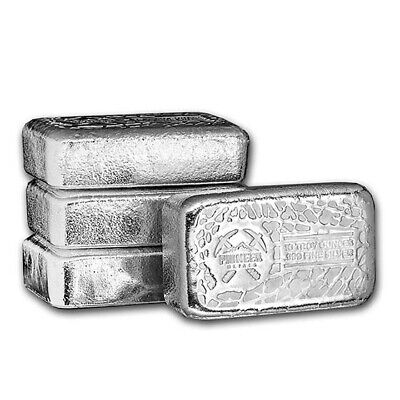Investing in precious metals like silver can effectively diversify your portfolio and safeguard wealth against economic uncertainties. When considering precious metals, investors often choose between bullion bars and coins. While both forms offer tangible assets, they differ in several key areas, including premiums, storage, and recognizability. This article will explore these differences to determine which option is the better investment for your needs.
Understanding Premiums
The premium is the amount you pay over the metal’s spot price. It covers the cost of production, distribution, and the dealer’s profit margin. Generally, bullion coins tend to carry higher premiums than bars. This is due to design intricacy, legal tender status, and limited mintage in some cases.
- Bullion Bars: Typically, bars have lower premiums because they are produced in larger quantities and have more straightforward designs. This makes them more cost-effective for investors seeking to acquire metal by volume.
- Bullion Coins: Coins often carry higher premiums due to their collectibility, detailed designs, and status as legal tender. For example, coins like the American Silver Eagle or Canadian Maple Leaf often come with higher premiums than equivalent weight bars.
Understanding these differences in premiums is crucial for investors, especially those looking to maximize their metal holdings at the lowest possible cost.
Storage Considerations
Storage is another important factor when investing in bullion. The ease of storage and security required can differ significantly between bars and coins.
- Bullion Bars: Due to their uniform shape and larger sizes, bars are often more accessible and more cost-effective to store in bulk. They require less space and can be securely stacked in a safe or vault.
- Bullion Coins: Due to their smaller size and variety, coins can be more challenging to store. They may require individual holders or tubes, which can increase storage space requirements and costs.
Investors should carefully consider their storage capabilities and costs when choosing between bars and coins.
Recognizability and Liquidity
The ease of selling your bullion and its recognizability in the market can impact your investment’s liquidity.
- Bullion Bars: While bars are widely recognized, especially those from reputable mints like PAMP Suisse and Johnson Matthey, they may not be as easily liquidated in smaller amounts as coins.
- Bullion Coins: Coins are often more recognizable to the general public and smaller investors, making them easier to sell in smaller quantities. Coins from major mints like the U.S. Mint or the Royal Canadian Mint are particularly well-known and liquid.
Coins might offer a slight advantage for investors prioritizing liquidity and ease of selling.
Tax Implications
Depending on the jurisdiction, tax considerations can also differ between bars and coins.
- Bullion Bars: In some regions, bars are taxed at rates different from coins. Before investing, it’s essential to understand the tax implications in your area.
- Bullion Coins: Coins may qualify for different tax treatments, such as being exempt from sales taxes or considered legal tender, which can offer tax advantages.
Investors should consult with a tax professional to understand the specific tax obligations related to their investments.
Conclusion
Deciding between bullion bars and coins depends on various factors, including premiums, storage needs, recognizability, liquidity, and tax considerations. Bars often offer lower premiums and more straightforward storage, making them ideal for acquiring metal by volume. Coins, on the other hand, provide greater recognizability and liquidity, which can benefit smaller transactions or those who appreciate numismatic value.
Ultimately, the choice between bullion bars and coins should align with your investment goals, storage capabilities, and market preferences. By understanding each option’s unique advantages and disadvantages, you can make a more informed decision that suits your financial strategy.
You can explore resources such as the U.S. Mint or the Royal Canadian Mint for more detailed insights.
